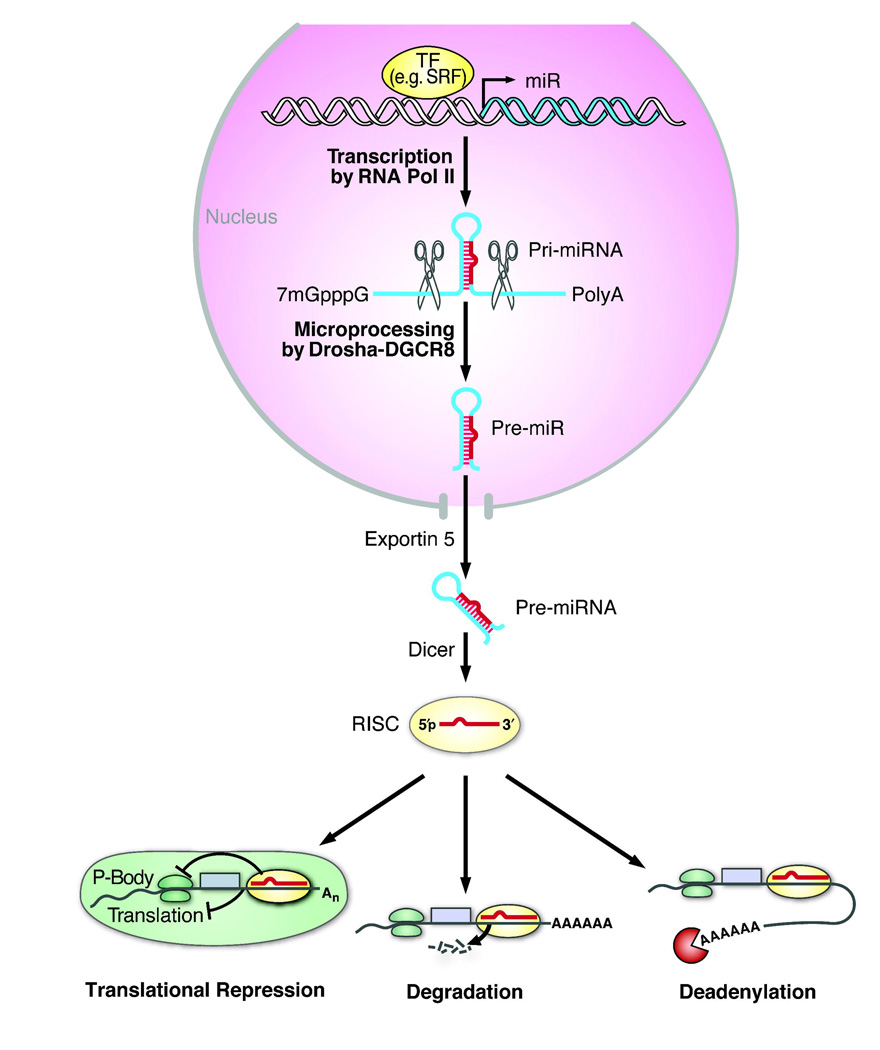Figure 1.
Schematic representation of miRNA biogenesis and function. Transcription of miRNA genes is typically mediated by RNA polymerase II (pol II). The initial miRNA-containing transcript, termed primary miRNAs (pri-miRNAs), can range from a few hundred nucleotides (nt) to several kilobases long. Inside the nucleus, the pri-miRNA has a characteristic stem-loop structure that can be recognized and cleaved by the ribonuclease III (RNase III) endonuclease Drosha along with its partner DGCR8 (DiGeorge syndrome critical region 8 gene; also known as Pasha). The cleavage product, a ~70-nt stem-loop pre-miRNA, is exported from the nucleus by Exportin 5. In the cytoplasm, another RNase III enzyme, Dicer, further cleaves the pre-miRNA into a double-stranded mature miRNA (~21-nt), which is incorporated into the RNA-induced silencing complex (RISC) allowing preferential strand-separation of the mature miRNA to repress mRNA translation or destabilize mRNA transcripts through cleavage or deadenylation. Abbreviations: SRF, serum response factor; TF, transcription factor (adapted from 4).

